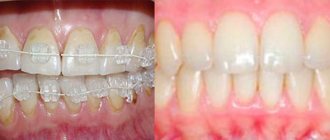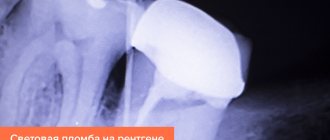Cifran ST is a well-known antimicrobial agent that allows you to fight diseases caused by both anaerobic and aerobic microorganisms. This is a combination drug, it is based on tinidazole and ciprofloxacin, their combination actively counteracts bacterial infection of the body.
Description of the drug
This medicine is produced in tablet format in two dosages (ciprofloxacin/tinidazole): 250 to 300 mg, or Cifran ST Forte - 500 mg ciprofloxacin/600 mg tinidazole. The tablets are elongated, close to oval, yellow in color, sealed in blisters of 10 pieces each. Each package may contain 1, 2 or 10 tablet tablets.
Ciprofloxacin is an antibiotic that is active against many types of microorganisms and is used to treat infections of various types. This substance belongs to the group of fluoroquinols. Its action is based on the destruction of DNA polymerase, and accordingly, stopping the process of bacterial reproduction and the synthesis of their cellular proteins.
Active ingredients
Tinidazole is a powerful agent for disrupting the activity of protozoa, including Giardia. It fights best against anaerobic bacteria, for example: Clostridium difficile, Bacteroides fragilis, etc. Since, mainly, when infected with anaerobic microorganisms, aerobic ones will also be present, it makes sense to combine tinidazole with an antibiotic of a different type, which was implemented in Tsifran ST .
Active components are absorbed from the gastrointestinal tract; they best maintain the required concentration when taken on an empty stomach. Their content reaches its maximum within one to two hours. The half-life of the drug from the body is about twelve hours.
Features of pharmacokinetics
Tinidazole quickly penetrates the tissues of the body, so it begins to act on pathogenic bacteria at high speed. Approximately half of the administered antibiotic is broken down through the biliary system, and a quarter of the dose taken is excreted through the urinary system. Tinidazole breakdown products, accounting for 12 percent of the administered volume, will also be excreted in the urine; a small amount may be contained in the feces.
The bioavailability of the complex antibiotic is 70 percent of the administered volume. The drug is characterized by rapid and concentrated penetration into body tissues and biological fluids; it is found in significant volumes not only in saliva, urine and bile, but also in bone and muscle tissues.
Half of the taken dose of the substance is excreted almost unchanged through the urinary system, 15 percent - in the form of metabolites in the same way, the rest - with bile, usually with partial reabsorption of the antibiotic.
When taken simultaneously with food, the adsorption of ciprofloxacin slows down significantly.
Ciprofloxacin is partially broken down in the liver. Up to thirty percent of the antibiotic is excreted in the feces. The half-life of the substance can last up to 4-4.5 hours. This process may take longer if the patient has kidney failure or other problems with the urinary system.
Pharmacological properties of the drug Cifran st
Pharmacodynamics. The pharmacological properties of the drug are determined by the properties of its active components. Ciprofloxacin, like other fluorinated quinolones, inhibits the enzyme DNA gyrase of bacteria, as a result of which bacterial DNA replication is disrupted. Ciprofloxacin is active against a wide range of microorganisms, gram-positive and gram-negative bacteria. The spectrum of action of ciprofloxacin covers the following microorganisms: aerobic gram-negative bacteria Escherichia coli, Klebsiella pneumoniae, Salmonella typhi, Proteus mirabilis, Proteus vulgaris, Shigella sonnei, Shigella boydii, Shigella dysenteriae, Shigella flexneri, Enterobacter cloacae, Moraxella morganii, Providencia rettgeri, Providencia stuartii , Citrobacter diversus, Citrobacter freundii, Serratia marcescens, Campylobacter jejuni, Pseudomonas aeruginosa, Neisseria gonorrhoeae, Haemophilus influenzae, Haemophilus parainfluenzae, Bacillus anthracis., Moraxella catarrhalis ; aerobic gram-positive bacteria - Enterococcus faecalis (some strains are moderately sensitive), Staphylococcus aureus (only methicillin-sensitive strains), Staphylococcus epidermidis (only methicillin-sensitive strains), Staphylococcus saprophyticus, Streptococcus pneumoniae (only methicillin-sensitive strains), Streptococcus pyogenes . Ciprofloxacin demonstrates in vitro minimal inhibitory concentration (MIC) of ≤1 µg/ml against the majority (90%) of the following specified microorganisms; however, the safety and effectiveness of ciprofloxacin in the treatment of infections caused by these microorganisms has not yet been established in adequate and well-controlled clinical trials: aerobic gram-positive bacteria: Staphylococcus haemolyticus, Staphylococcus hominis, Streptococcus pneumoniae (penicillin-resistant strains only); aerobic gram-negative microorganisms: Acinetobacter lwoffi, Aeromonas hydrophila, Edwardsiella tarda, Enterobacter aerogenes, Klebsiella oxytoca, Legionella pneumophila, Pasteurella multocida, Salmonella enteritidis, Vibrio Cholerae, Vibrio parahaemolyticus, Vibrio vulnificus, Yersinia enterocolitica . Most strains of Burkholderia cepacia and some strains of Stenotrophomonas maltophilia are resistant to ciprofloxacin, as are most anaerobic bacteria, including Bacteroides fragilis and Clostridium difficile . Tinidazole is a synthetic drug of the nitroimidazole group that has an antibacterial (relative to obligate anaerobic bacteria) and antiprotozoal effect. The mechanism of action of tinidazole is due to a violation of the DNA synthesis of microorganisms. Tinidazole is bactericidal. The spectrum of action of tinidazole covers the following microorganisms: anaerobic bacteria Bacteroides fragilis, Bacteroides melaninogenicus, Bacteroides spp., Clostridium spp., Eubacterium spp., Fusobacterium spp., Peptococcus spp., Peptostreptococcus spp., Vellionella spp., Gardnerella vaginalis ; Helicobacter pylori. Tinidazole is also active against protozoa: Trichomonas vaginalis, Entamoeba histolytica and Giardia lamblia . Pharmacokinetics. Not studied.
Indications and contraindications
A complex antibiotic is designed to fight bacterial infections, primarily mixed types. Cifran tablets help against the symptoms of bacterial infection; it has a noticeable effect on both gram-positive and gram-negative microorganisms, preventing their reproduction and metabolism.
The medicine is used in many areas, including dentistry. The list of indications for the use of Cifran includes the following diseases:
- organs of the ENT group
: mastoiditis, otitis media (middle), pharyngitis, sinusitis, frontal sinusitis, tonsillitis, sinusitis; - skin and soft tissues
: burns, wounds, diabetic foot ulcers, cellulitis, infected ulcers, bedsores, abscesses; - oral cavity
: acute ulcerative type gingivitis, periodontitis, periostitis; - urinary tract and genital organs: tubular abscess, endometritis, prostatitis, salpingitis, pelvioperitonitis, cystitis, pyelonephritis;
- bones and joints: osteomyelitis, septic arthritis;
- gastrointestinal infection: typhoid fever, shigellosis, amebiasis, diarrhea, dysentery (amebic or mixed);
- diseases of the middle and lower respiratory tract: acute bronchitis, chronic bronchitis during exacerbation, pneumonia, bronchiectasis (acquired or congenital), lung abscess;
- prevention of infections after operations and other surgical interventions.
Considering the pharmacokinetics of the drug, it can treat a wide range of different diseases. The high level of penetration and rate of distribution throughout the body determine the effectiveness of Cifran. Doctors regularly prescribe the drug Cifran; indications for use can be very different, but of a similar origin.
WE RECOMMEND THE ARTICLE!
Amikacin is a semi-synthetic antibacterial drug that destroys pathogenic microorganisms. Read more >>
Contraindications for use
Returning to the process of absorption and breakdown of the drug, it is worth remembering the contraindications to the use of the drug. Tsifran is used to treat an organism already weakened by bacterial infection, so you should strictly follow the instructions. Absolute contraindications include:
- Blood diseases, including inhibition of the hematopoietic function of the bone marrow.
- Lesions of the nervous system of an organic nature.
- Lactose intolerance. Lactase deficiency is also a reason not to use this drug.
- Glucose-galactose malabsorption. This is a hereditary disease characterized by the inability to completely absorb monosaccharides (glucose and galactose) due to the specifics of the gastrointestinal tract.
- Pregnancy, breastfeeding (tinidazole may potentially have carcinogenic, mutagenic effects).
- Minor age (less than 18 years old).
- Personal intolerance to the components of the drug.
- Taking tizanidine (muscle relaxant). The simultaneous use of Tsifran and this drug is dangerous due to a sharp, significant decrease in blood pressure, at the same time causing drowsiness and fatigue.
In addition to absolute contraindications, there are also relative ones, in which the use of Tsifran in antibiotic treatment is possible, but only under the supervision of the attending physician.
Relative contraindications
Relative contraindications are associated with the characteristics of the body and various diseases that could potentially affect the speed and efficiency of absorption of the drug, as well as whether side effects will occur and how exactly the body will react to the active ingredients. Relative contraindications for the use of Tsifran St are:
- disturbances in the process of blood circulation in the brain;
- recent therapy, including fluoroquinolones, aimed at treating tendons;
- obvious and progressive atherosclerosis of blood vessels, especially of the brain;
- previous or chronic heart diseases, including myocardial infarction;
- severe deficiency of potassium and/or magnesium;
- congenital or acquired long QT interval syndrome;
- renal failure;
- mental illnesses;
- liver diseases that interfere with its normal functioning;
- epileptic syndrome and epilepsy;
- therapy with antiarrhythmic drugs, groups IA (including Quinidine, Disopyramide, Novocainamide, Gilurythmal) and III (Brethylium tosylate, Amiodarone, Sotalol);
- combination therapy including caffeine, theophylline, clozapine, methylxanthine and other inhibitors of CYP4501A2 isoenzymes;
- old age (due to possible deterioration of liver and kidney functions).
Relative contraindications suggest the need to carefully monitor the patient's condition for changes or deterioration associated with taking Cifran ST. If any strange or uncharacteristic symptoms occur, you should stop taking the medicine and look for another method of antibacterial action.
Indications for use of the drug Tsifran st
Therapy for mixed infections caused by aerobic and anaerobic microorganisms sensitive to the drug, as well as for the treatment of protozoal infections:
- respiratory tract infections: pleurisy, pleural empyema, lung abscess;
- ENT infections: chronic sinusitis, mastoiditis;
- skin and soft tissue infections: infected ulcers, abscesses, cellulitis, soft tissue infections in patients with diabetes;
- treatment of diarrhea, dysentery, mixed amoebic-bacterial infection of the gastrointestinal tract;
- intra-abdominal infections, including postoperative ones, caused by aerobic-anaerobic microbial associations;
- gynecological infections caused by aerobic-anaerobic microbial associations;
- bone infections: chronic osteomyelitis;
- orodental infections.
Instructions for use
It makes sense to take Cifran after meals, drink plenty of plain water without additives (filtered, warm). The tablets should not be broken or bitten; they are covered with a special coating, which will allow them to be properly broken down in the gastrointestinal tract and absorbed as best as possible. The appointment usually takes place twice a day, unless otherwise indicated by the attending physician.
The drug is intended for adults only.
The most common dosage is as follows: Cifran ST is prescribed 1-2 tablets twice a day, Cifran ST-Forte is prescribed 1 tablet 2 times a day. If the disease is particularly specific, a different dosage of the drug may be prescribed, but this is unlikely.
Side effects of Tsifran ST
From the digestive system, loss of appetite, stool disorders, flatulence, nausea and vomiting may be observed. Sometimes there are signs of liver damage, jaundice and a distinct metallic taste in the mouth. If you experience dry mouth, which is combined with a burning sensation of the tongue, difficulty swallowing and chewing, you should stop taking Cifran.
The central nervous system may signal poor drug tolerance in the following ways:
- headache, dizziness, migraines;
- a sharp decrease in the pain threshold or, conversely, its increase;
- paresthesia (irritation of nerve endings, sudden tingling, goosebumps, pain not associated with external factors);
- disorientation, impaired coordination of movements, gait disturbance, dysarthria;
- insomnia or nightmares;
- convulsions, tremors;
- increased fatigue, weakness;
- increased intracranial pressure;
- manifestations of mental reactions, incl. hallucinations, anxiety, depression.
If we talk about the heart and blood vessels in the context of side effects from taking medication, symptoms such as tachycardia and heart rhythm disturbances may occur. Often there is a decrease in blood pressure, ventricular arrhythmias, and prolongation of the QT interval on the cardiogram.
These factors must be taken into account if there is a need to undergo cardiac examinations while taking the drug.
Possible disturbances in the hematopoietic process of the spinal cord, granulocytopenia and other disturbances in the functioning of the hematopoietic system of the body.
Other body systems may respond with unusual symptoms. When taking the drug, you should listen carefully to how the body behaves and try to prevent unpleasant consequences.
Interactions of the drug Cifran st
Serious and sometimes fatal reactions have been reported in patients taking ciprofloxacin and theophylline concomitantly. Since ciprofloxacin is a cytochrome P450 inhibitor, its combined use with other drugs metabolized mainly through this enzyme (for example, theophylline, methylxanthines, tizanidine) leads to an increase in the concentration of these drugs in the blood plasma and can cause corresponding toxic effects. If it is necessary to use theophylline and ciprofloxacin simultaneously, the level of theophylline in the blood serum should be monitored and the dose of the drug should be adjusted. Cifran ST should be taken no earlier than 4 hours after taking medications containing magnesium, aluminum, iron, sucralfate, and zinc. Ciprofloxacin affects the metabolism of caffeine, increasing its half-life. The following drug interactions are possible with the combined use of Tsifran ST and the following drugs:
A drug | Effect |
| Phenytoin | Change (increase or decrease) in serum levels, prolongation of half-life |
| Sulfonylureas | Hypoglycemia |
| Warfarin | Strengthening the anticoagulant effect |
| Methotrexate | Increased toxicity |
| NSAIDs | Changes in the central nervous system |
| Lithium preparations | Increased serum lithium levels |
| Cyclosporine, tacrolimus | Increased serum drug levels |
| Fluorouracil | Decreased clearance with increased toxicity |
| Liver enzyme inducers (eg phenobarbital, rifampicin) | Acceleration of elimination of tinidazole from blood plasma |
| Liver enzyme inhibitors (eg cimetidine, ketoconazole) | Slowing down the elimination of tinidazole from blood plasma |
| Sulfonylureas | Hypoglycemic effect |
| Cholestyramine | Reduced bioavailability of tinidazole |
| Probenecid | Decreased serum ciprofloxacin levels |
It is necessary to avoid drinking alcoholic beverages and medications containing ethyl alcohol or propylene glycol during treatment with Cifran ST and for another 3 days after that due to the possibility of intestinal spasms, nausea, vomiting, headaches and hot flashes. The development of psychotic reactions has been reported in alcoholics concomitantly taking metronidazole and disulfiram. Although similar reactions have not been reported with tinidazole, tinidazole should not be administered to patients taking disulfiram for 2 weeks the previous day.
Analogs
Analogs of Cifran ST usually have ciprofloxacin or its derivatives as the active ingredient. Their prices vary significantly. It depends on the place of production and related substances.
| A drug | Active substance | Manufacturer | Price |
| Tsiprolet | ciprofloxacin hydrochloride | D.R. REDDY`S LABORATORIES LTD. (India) | 53-330 rub. |
| Tsiprobay | ciprofloxacin | Bayer Pharma AG (Germany), Bayer Healthcare Manufacturing S.r.L., (Italy) | 230-250 rub. |
| Zindolin | ciprofloxacin | Remedica (Cyprus) | 300-400 rub. |
| Ciprofloxacin | ciprofloxacin | Rompharm (Romania) | 18-128 rub. |
| Amoxiclav | amoxicillin and clavulanic acid | Lek d.d. Slovenia | from 125 rub. |
| Amoxicillin | amoxicillin | Northern Star, Dalkhimpharm, Biokhimik (Russia), Natur Product Europe (Netherlands) | 39-183 rub. |
| Betaciprol | ciprofloxacin | Beta-Lek, LLC (Russia) | 300-450 rub. |
| Basijen | ciprofloxacin | Claris (India) | 9-70 rub. |
| Afenoxin | ciprofloxacin | Faran (Greece) | currently out of stock |
Overdose of the drug Cifran st, symptoms and treatment
Symptoms: Nephrotoxicity has been reported in cases of acute overdose. Treatment: empty the stomach by inducing vomiting, or rinse the stomach. The patient should be closely monitored and receive supportive care, including monitoring of renal function and administration of antacids containing magnesium, aluminum or calcium, which may reduce the absorption of ciprofloxacin. Adequate water regime should be maintained. Only a small amount of ciprofloxacin (≤10%) is removed from the body by hemodialysis or peritoneal dialysis.
Comparisons and differences
Tsifran has a convenient release form in the form of eye drops. Amoxiclav only has forms in the form of tablets, powder for suspension and powder for injection. Medicines can be prescribed for various infectious and bacterial diseases. Their spectrum of action is approximately the same, but they act differently due to the content of different components.
The cost of drugs varies slightly. Tsifran can be found on sale at a price of about 50 rubles for the minimum dosage, while Amoxiclav costs much more - about 350 rubles .
People note that when taking Cifran there are more side effects than when using Amoxiclav. This may be due to the presence of certain substances in the composition.
Amoxiclav is allowed for use even by infants, while Tsifran is prohibited at this age.
Medicine and healthComment










